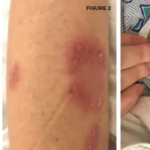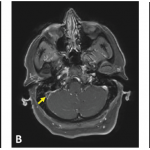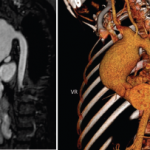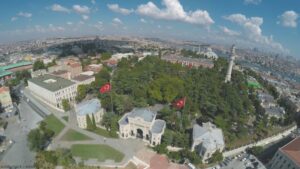 In 1937, the Turkish physician Hulusi Behçet described a number of patients with relapsing aphthous ulcers in the mouth and over the genitalia, as well as hypopyon iritis. Since that time, the eponymous condition, known as Behçet’s disease, has been recognized as a multisystem vasculitis that can present with myriad other signs and symptoms. Although the condition can be found across the globe, Turkey and other countries along the route once known as the Silk Road have been found to have a higher incidence of Behçet’s disease than in the rest of the world.
In 1937, the Turkish physician Hulusi Behçet described a number of patients with relapsing aphthous ulcers in the mouth and over the genitalia, as well as hypopyon iritis. Since that time, the eponymous condition, known as Behçet’s disease, has been recognized as a multisystem vasculitis that can present with myriad other signs and symptoms. Although the condition can be found across the globe, Turkey and other countries along the route once known as the Silk Road have been found to have a higher incidence of Behçet’s disease than in the rest of the world.
Through a confluence of circumstances, Hasan Yazici, MD, has enjoyed a professional life that has led him from Turkey to the U.S. and back again as he ascended to the rank of chair of the Behçet’s Disease Research Center and of the Division of Rheumatology at the University of Istanbul. Even more amazing, he has passed on his passion for the research and care of patients with Behçet’s disease to his son, Yusuf Yazici, MD, who is an associate professor of medicine and the director of the Behçet’s Syndrome Evaluation, Treatment, and Research Center at the New York University School of Medicine.
Early Years
After completing medical school at the University of Istanbul, Dr. Yazici traveled to Philadelphia to complete his intern year in internal medicine. He then moved to Nebraska, where he completed his internal medicine residency and rheumatology fellowship at Creighton University.
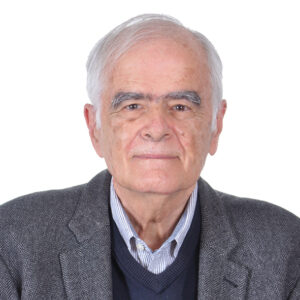
Dr. Yazici
Dr. Yazici recalls that a number of his professors assumed he had unique knowledge about Behçet’s disease because he had completed medical school in Turkey. However, he notes, in actuality, he didn’t know much more about the disease at that time than any other young medical trainee.
He intended to follow his medical residency with a fellowship in clinical pharmacology at the University of Iowa, but the guidance of a role model changed that plan.
Role Models
When Dr. Yazici was in his final rotation of his final year of medical residency, he met Paul D. Saville, MD, MRCP. At the time, Dr. Saville was the only academic rheumatologist in Omaha, seeing patients and teaching trainees while also overseeing the Metabolic Research Unit at Creighton. After only three weeks into his rotation, Dr. Yazici was convinced that he wanted to be a rheumatologist and, specifically, be a clinician-scientist like Dr. Saville.
